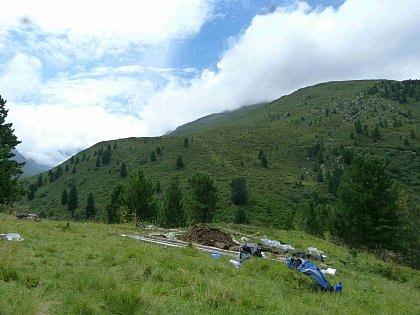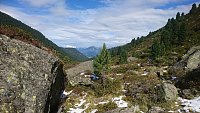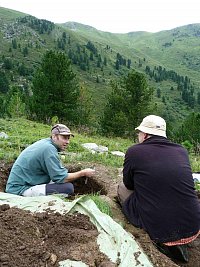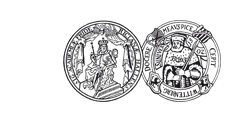Reconstruction of vegetation, climate and settlement history based on soil science and geoarchaeological investigations
From 2017
- Project sponsor: DFG - German Research Foundation
- Project leader: Dr. Michael Zech
- Staff: Marcel Lerch
- Co-responsible: Prof. Dr. Bruno Glaser
Cooperation partners:
- Associate Professor Dr. Clemens Geitner (University of Innsbruck)
- Associate Professor Dr. Dieter Schäfer (University of Innsbruck)
- Professor Dr. Michael Strasser (University of Innsbruck)
- Associate Professor Dr. Jean-Nicolas Haas (University of Innsbruck)

Ullafelsen (Foto: Michael Zech)
With the discovery of the Copper Age mummy known as ‘Ötzi, the Iceman’ on the Tisenjoch in the Ötztal Alps in 1991, high-altitude archaeology in Tyrol attracted worldwide attention. Triggered and coordinated by archaeologist Dieter Schäfer, intensive research has also been conducted for around 20 years as part of the ‘Ullafelsen Mesolithic Project’ in the Fotschertal valley in the Stubai Alps near Innsbruck. The main starting point for these investigations is the Mesolithic site of Ullafelsen at 1,869 metres above sea level, which was used as a summer settlement between 11,000 and 9,500 years ago. The present project focuses on three questions/topics, which will be answered using modern soil biogeochemical and archaeometric research methods and which will complement the archaeological and soil science-stratigraphic work already carried out.

Ullafelsen (Foto: Marianne Benesch)
Firstly, it should be clarified what vegetation prevailed on and around the Ullafelsen before, during and after human settlement in the summer. The Ullafelsen, which is now unwooded, is located in the area of the current upper forest boundary; however, this is thought to have been lowered by anthropogenic and zoogenic factors. This raises the question of whether soil science investigations can be used to detect forest boundaries/vegetation shifts and possibly also classify them chronologically. To answer these questions, the analysis of plant-derived lipid and sugar biomarkers as well as charcoal biomarkers will be used. The second set of questions and topics concerns the climatic conditions that prevailed before, during and after the settlement of the Ullafelsen by humans. Here, coupled stable isotope analyses (18O - 2H) of plant-derived lipid and sugar biomarkers will be used to apply a recently developed ‘paleohygrometer’. On the other hand, the 18O and 2H isotopy of paleoprecipitation will be reconstructed and membrane lipids (GDGTs) from soil bacteria will be examined in order to use them as a proxy for the reconstruction of paleotemperature.

Sampling at Ullafelsen (photo: Marianne Benesch)
Finally, the third set of questions and topics is devoted to proving human settlement and use of the Ullafelsen rock using faecal and charcoal biomarkers. In combination with phosphorus content and nitrogen isotope analyses (15N), conclusions will be drawn about the type and intensity of summer settlement and the spatial areas of human activity. Answering the questions raised using modern soil biogeochemical and archaeometric analysis methods would also make a valuable contribution to understanding the late glacial and Holocene landscape, climate and settlement history of the subalpine zone, taking into account anthropogenic influences, beyond the locality of the Ullafelsen.




